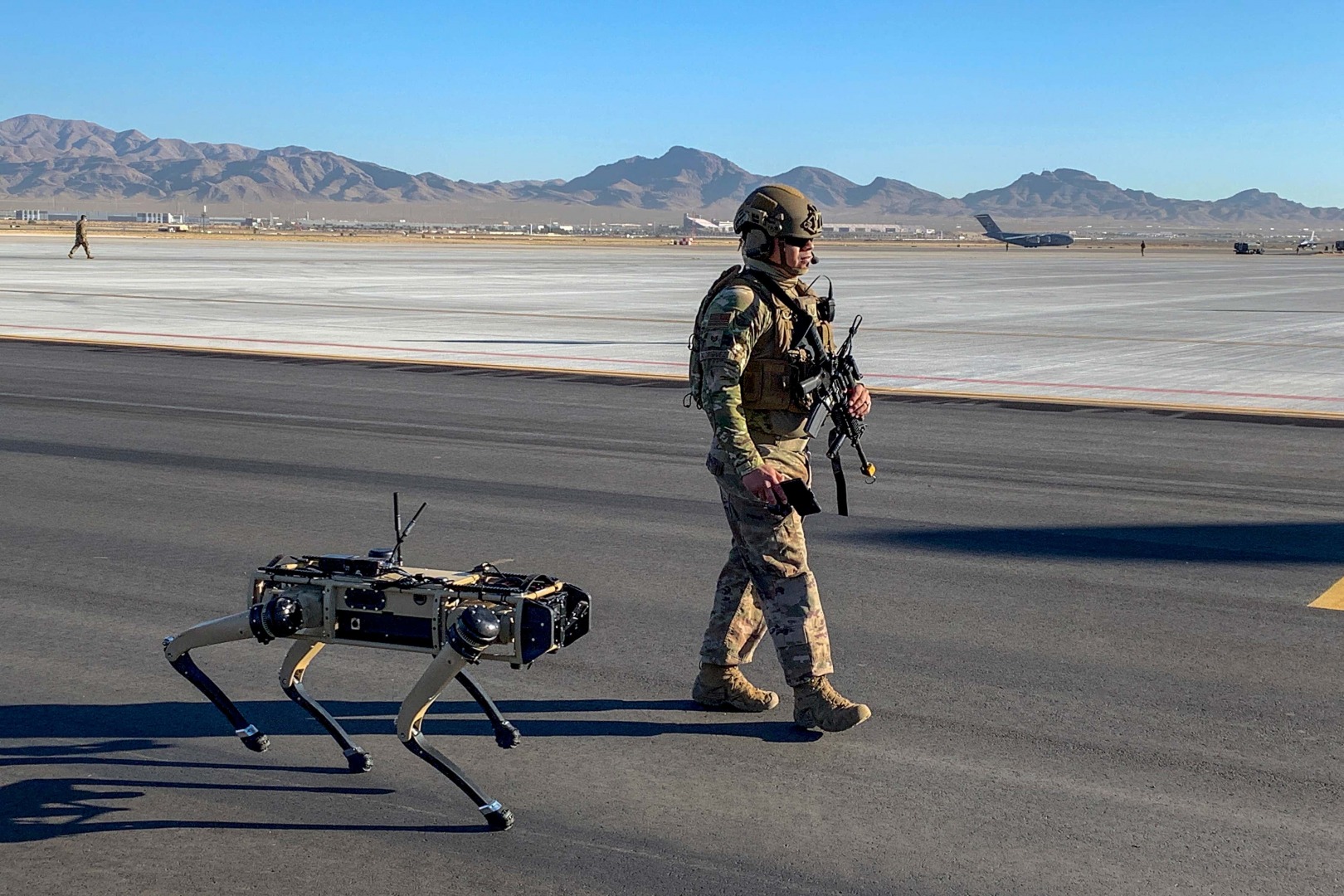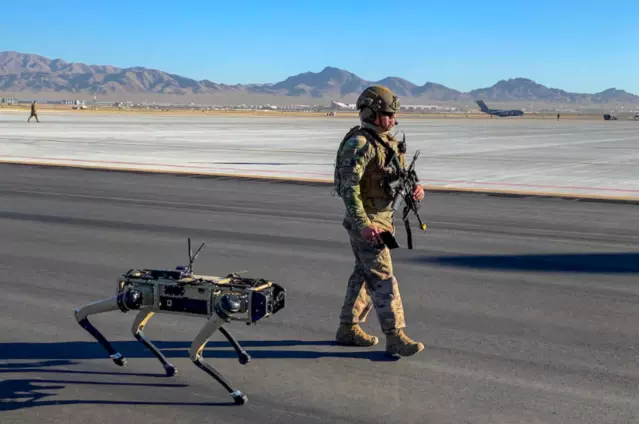Comments
- No comments found

Man's best friend.
There are many reasons why dogs are considered such amazing companions, workers, and pets. From an irresistible personality to undying loyalty, our canine friends have become essential partners for families, small farms, and global businesses. This special relationship, thousands of years old, seems to grow stronger every year. Yet interestingly, it evolved from a bitter rivalry of survival and control.

Photo Credit: U.S. Air Force
Recently, the U.S. Air Force has taken its new "dog" out for a walk. The Vision 60, from Ghost Robotics, is called a Q-UGV or Quadrupedal Unmanned Ground Vehicle and is designed for tasks like inspections, surveillance, mapping, and security. I'm not sure Ghost Robotics or the Air Forces has come up with a more friendly name, but I'll bet that's just a matter of time.
What I find interesting with the evolution of the "robotic dog" is that it tends to evolve the nature of our relationship with technology. And while this may be partly the psychological association of using the robot in the form of an animal or even pet (why not wheels vs. four legs?), the connection between tech and humanity is expansive and the implications are vast. From surgical technique to gaming to voice, our relationship with tech is becoming personal and intimate. So intermingled, that the distinctions between both can be sometimes lost. Beyond the blurring of relationships, there might even been a reversal of perceptions and outcomes. The "unpredictable" nature of the robotic dog may become more the domain of humans, as technology becomes more reliable, predictable, and even more safe.
Our cognition and empathy—IQ and EQ—are now subject to the intrusion of technology. Tech can enhance and partner with our cognitive capacity. It may also may drive interactions with aspects of our empathy—for better or worse. Yet, the technological reality of robotic dogs and electronic brain interfaces are out of the proverbial toothpaste tube, and there's little likelihood of putting them back in.
Our path forward, perhaps walking our own robotic dog, is to recognize that IQ and EQ will be evolved and enhanced by our ability to assimilate technology into our lives or our Technology Quotient (TQ). Simply put, our future is about IQ + EQ + TQ. These three components come together to create a technologically enhanced, yet very human construct.
Our future relationship between technology and humanity will be complex. As with our very early canine relationships, it may be based on some aspects, like the common conflict around tech adoption and acceptance. And this techno-relationship may even include a component of rivalry—on the part of humanity and machine. Nevertheless, our intertwined, synergistic relationship with technology will test the bounds of both our control and comfort.
John is the #1 global influencer in digital health and generally regarded as one of the top global strategic and creative thinkers in this important and expanding area. He is also one the most popular speakers around the globe presenting his vibrant and insightful perspective on the future of health innovation. His focus is on guiding companies, NGOs, and governments through the dynamics of exponential change in the health / tech marketplaces. He is also a member of the Google Health Advisory Board, pens HEALTH CRITICAL for Forbes--a top global blog on health & technology and THE DIGITAL SELF for Psychology Today—a leading blog focused on the digital transformation of humanity. He is also on the faculty of Exponential Medicine. John has an established reputation as a vocal advocate for strategic thinking and creativity. He has built his career on the “science of advertising,” a process where strategy and creativity work together for superior marketing. He has also been recognized for his ability to translate difficult medical and scientific concepts into material that can be more easily communicated to consumers, clinicians and scientists. Additionally, John has distinguished himself as a scientific thinker. Earlier in his career, John was a research associate at Harvard Medical School and has co-authored several papers with global thought-leaders in the field of cardiovascular physiology with a focus on acute myocardial infarction, ventricular arrhythmias and sudden cardiac death.
Leave your comments
Post comment as a guest